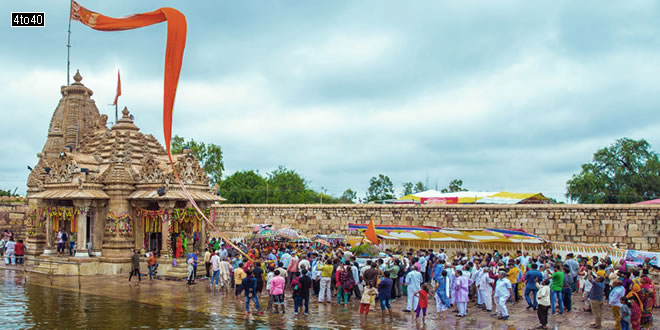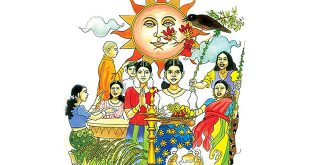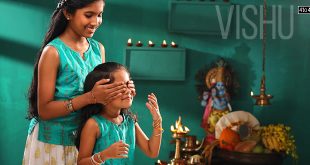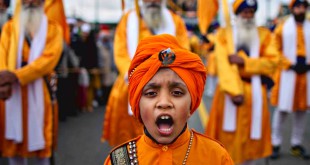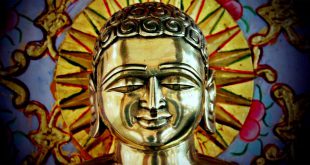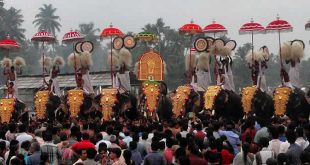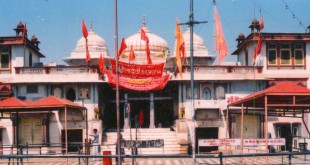An exciting and unique three-day Tarnetar Mela held annually at Tarnetar in Saurashtra, Gujarat. The Tarnetar fair is one of the most colorful events in the state of Gujarat. The fair coincides with the festival at the Trineteshwar temple (three-eyed Lord Shiva), celebrating the wedding of the legendary Mahabharata (epic) hero, Arjuna with Draupadi.
Tarnetar Mela: Celebrating the legend of Draupadi’s Swayamvara
The Trinetreshwar Mahadev Fair popularly called the Tarnetar Mela is an exciting and a unique fair held annually at Tarnetar in Saurashtra.
In the first week of Bhadrapad (August-September) Tarnetar is transformed into a whirl of colour and excitement. The Tarnetar fair is one of the most colorful events in the state of Gujarat.
Tarnetar Mela Date:
- 2024: 05 – 08 September
- 2023: 18 – 20 September
History of the Tarnetar Mela:
Not many would be aware of the history of this beautiful festival which is attended by more than 50000 people every year. The legend is related to Draupadi’s swayamavar, an episode from the Indian epic, the Mahabharata. Arjun, one of the main characters, and a Pandava, had participated in the swayamvar. In order to marry Draupadi, he pierced the eye of a rotating fish by just looking at the fish’s reflection in the water. Also, Arjun was a brilliant and undefeatable archer!
It is said that this traditional fair, celebrating Draupadi’s swayamvar, began some 200 to 250 years ago. The festival and fair is organized at the Trinetreshwar Mahadev temple (the three-eye-god), which was constructed back in the 19th century. This temple is the focal point of the fair, and this is where all the festivities are held. It dates back to the Solanki era, and celebrate the three-day festival with much enthusiasm.
Inside the temple, there is a Brahma Kund, a Shiva Kund, and a Vishnu Kund and it is believed that taking a plunge in these three water reservoirs is equivalent to taking a dip in the waters of the holy Ganges!
There is a kund (reservoir) here and it is popularly believed that a dip in its waters is as holy as a dip in the sacred River Ganges. The reservoir is also known as Papanshu (the destroyer of sins).
The temple heavily renovated in the 19th century, is believed to be the site where Arjuna won the hand of Draupadi in an archery contest. The popular belief associates the village with the swayamvar (marriage) of Draupadi after Arjuna performed the Mastsyavedh, an incredible feat of archery.
Villagers from all over Saurashtra, dressed in their traditional costumes and exquisite jewellery throng Tarnetar in there thousands forthe fair.
Tarnetar Mela Visitors:
The bachelors are usually identified by their large umbrellas (Chhatris) with intricate embroidery and mirror work.
Tarnetar Mela, Saurashtra, Gujarat: Celebrations
The special feature of the fair primarily created to fulfil social needs for members of Bharwad community, is that their matrimonial alliances are struck here (hence the reason for gorgeous traditional costumes worn by the people), a time-honored ritual that is still practiced. The temple courtyard resounds with devotional music.
This fair is primarily a marriage mart or Swayamvar for the tribal youth of today who still visit Tarnetar, to find them a suitable bride. The tribal youth elegantly dressed in colorful dhotis, waistcoats and eye-catching turbans come to be chosen by village belles dressed in colorful finery.
The fair is a kind of marriage market for the local tribal – the Kolis, Bharwads and Rabaris who visit Tarnetar to find suitable brides. Tradition holds that if the girl stops to talk to one of the men, it is a sign that she has found the man of her choice.
Rhythm of Folk:
The beauty of this fair is in its impulsiveness with which the people joyously break into folk songs and folk dances to the rhythmic accompaniments of drums and an assortment of folk instruments. The young, men and women, swing and sway in gay abandon to the throbbing rhythm of the ras garba and the hudo dance.
Lively folk songs and dances – Garba, Ras, Hudo and the Rasada, the captivating folk dance performed by hundreds of women moving gracefully in a single circle, dancing to the accompaniment of drums and flutes are the special attractions of the fair, besides the wonderful Tarnetar “Chhatris” – umbrellas with intricate embroidery and mirror work. There are also exhibitions of rural handicrafts, a cattle show, and competitive sports. The most thrilling sight of all is the Rasada, the fascinating folk dance performed by hundreds of women, moving gracefully in a single circle. Dancing gaily to the accompaniment of four drums and Jodia Pava (double flutes.) their gorgeous traditional costumes and captivating dances makes the Tarnetar Fair a unique synthesis of folk art.
An added attraction of the fair is the lively folk dance performances such as Ras-Garba and Hudo dance and the Rasada, the fascinating folk dance performed by hundreds of women.
Tarnetar Chhatri:
Another distinctive feature of the fair is the Tarnetar Chhatri (umbrella). These umbrellas are a delightful treat for the connoisseur of art. The umbrellas meticulously embellished with mirror work, intricate embroidery and enchanting lacework are worth seeing
The bachelors are usually identified by their large colorful embroidered umbrellas and their distinctive hairstyles. These umbrellas, which have become emblems of the fair, are embroidered by the tribal youth for over a year. The fair is held around the Trinetreshwar Temple dedicated to the three-eyed Lord Shiva, built at the beginning of the century.
The small hamlet of Tarnetar, about 75 kilometers from Rajkot is the site for one of Gujarat s most well known annual fairs, the Trinetreshwar Mahadev Fair popularly called the Tarnetar Mela. Like all-important tribal fairs, it is attended by tribes from the adjoining areas of Koli, Bharwad, Rabari, Khant, Kanbi, Kathi, and Charan who indulge in dancing, competitive sports and other such forms of entertainment. There are over 300 stalls selling food, refreshments, exhibiting embroidery and cattle shows.
The tribal youth visit the Tarnetar Mela to find them suitable brides. They are elegantly dressed in colorful dhotis; embroidered jackets and eye-catching turbans come to be chosen by village belles dressed in colorful finery.
 Kids Portal For Parents India Kids Network
Kids Portal For Parents India Kids Network
